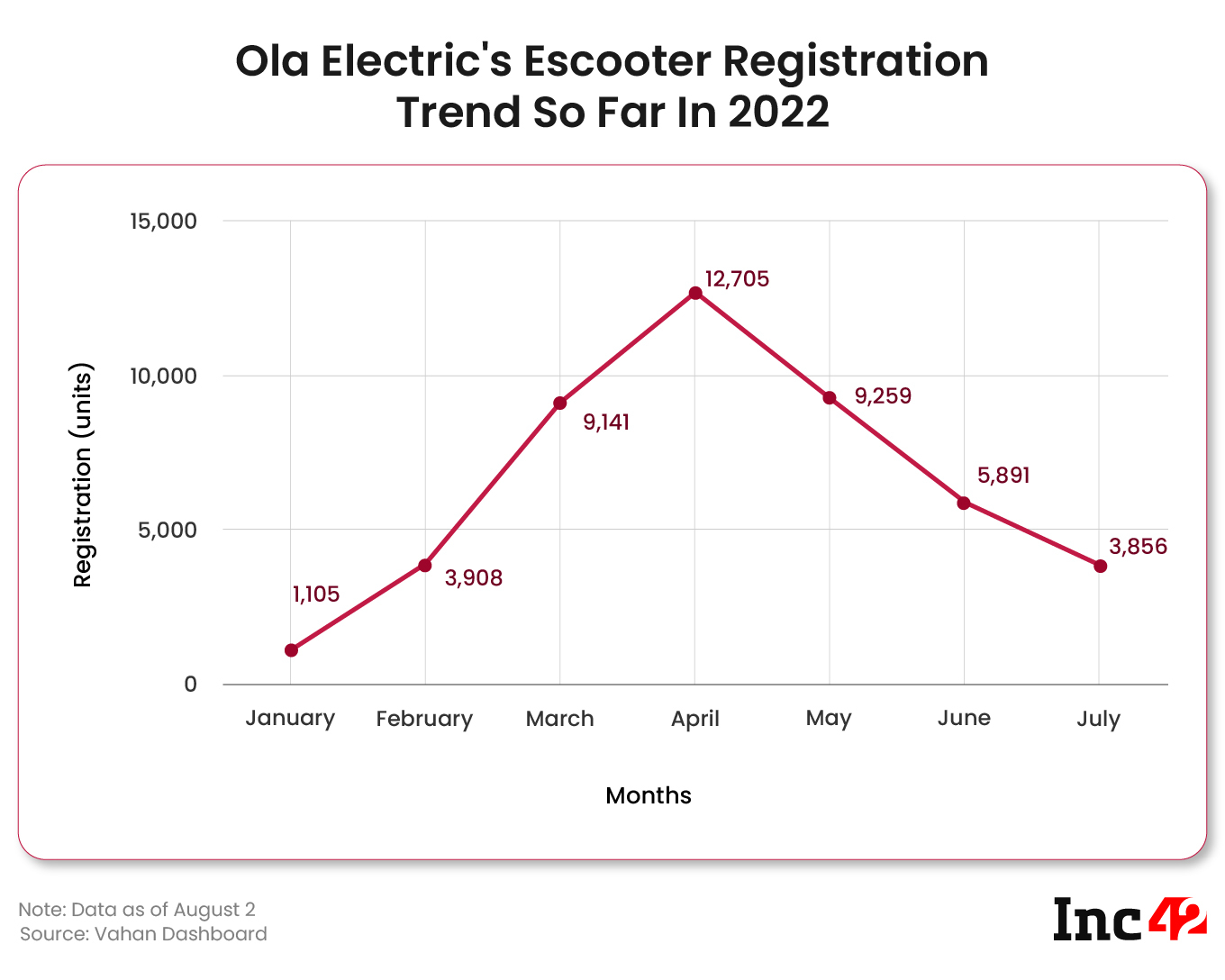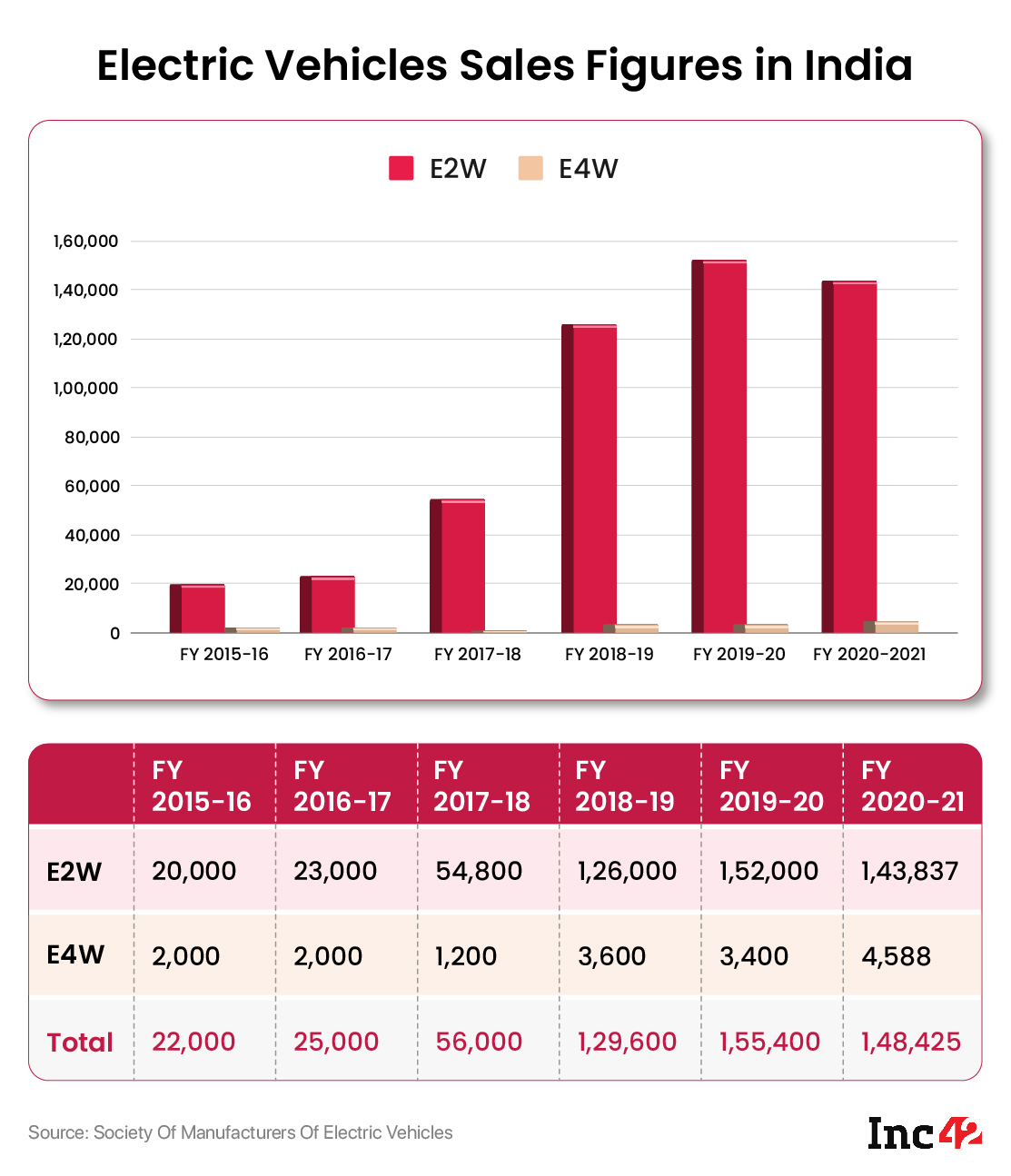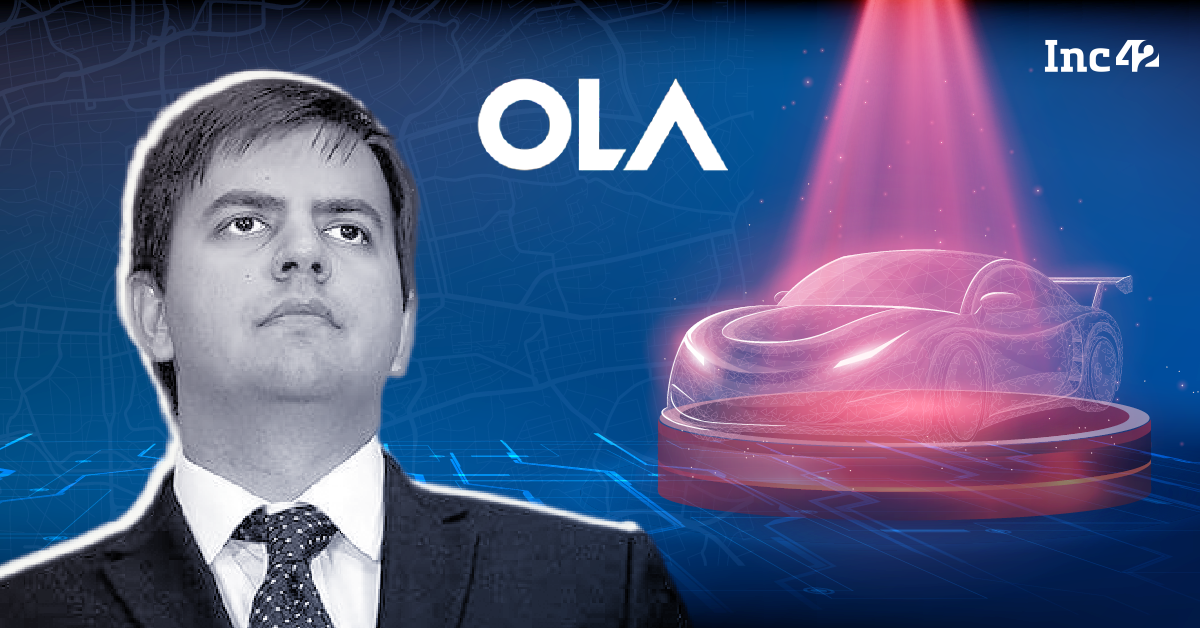After a year since announcing the launch of the Ola S1 and S1 Pro scooters, Bhavish Aggarwal is set to reveal details about his next big bet, the Ola Electric car, on August 15
Ola Electric’s scooters have already seen plenty of controversies with users reporting various safety incidents, while trouble in Ola’s core businesses also continue
It could be difficult for Ola Electric to create a market for its electric car in India unless it first fixes its dampened image
In June this year, Bhavish Aggarwal-led Ola Electric teased a video of a bright red car with Ola branding on the front at an event in its Futurefactory in Tamil Nadu.
After creating further hype about the electric car for over a month, Aggarwal now claims the company is set to reveal more details about its next big bet, the Ola Electric car, on August 15 this year, India’s 75th Independence Day.
The Ola founder’s latest tweet saying “Picture abhi baaki hai mere dost😎 See you on 15th August 2pm!” is in line with this hype machinery. Incidentally, August 15 would also mark one year since Ola Electric’s launch of the Ola S1 and S1 Pro scooters last year.
Manufactured at the 500-acre Futurefactory, the electric scooters have already seen plenty of controversies—from delayed deliveries to scooters catching fire to other safety issues. So, Ola Electric’s first year in the market has been topsy turvy.
Despite this, the hype and buzz around an Ola car is undeniable. Ola is now foraying into a segment that is packed with giants such as Tata Motors, MG Motor, Hyundai, and would soon see Mahindra, Nissan, and Maruti joining the bandwagon.
Unlike the electric two-wheeler space which has grown rapidly due to adoption by ecommerce and delivery players as well as consumers, the electric car market in India is still growing at a relatively slower pace.
As per an EY report, in FY21, registered EV sales across segments stood at 2,36,802 units with the electric two-wheeler segment accounting for over 60% of the market and only around 5,000 electric cars sold in the year. In FY20, about 3,000 electric cars were sold in India.
The opportunity is there for Ola Electric given that the Indian government aims to have 3 Cr EVs on the road in the next two years and has set a goal of having 30% EVs in the passenger cars segment by 2030.
However, in the past, we have seen Ola enter hot sectors and then retreat when things have grown tougher. So, before we dive deeper into Ola’s electric car dreams and how well it is positioned to capture the above opportunity, let’s take a look at its track record so far.
Ola’s Bad Streak In 2022
Despite its massive ambitions in the electric vehicle business, Ola has suffered plenty of real and reputational setbacks this year.
Ola’s core ride-hailing business has been in trouble for quite some time – even before the pandemic – and its electric vehicle operations have seen safety issues, legal trouble, shutdowns and controversies around Aggarwal’s bold statements on everything from Elon Musk to the so-called ‘Petrol Media’.
Most recently, drivers who had leased vehicles from Ola have raised cheating allegations and filed lawsuits and police complaints. Ola has been alleged to have taken away cars leased to the drivers citing maintenance, and later selling them off without informing these drivers, many of whom had already paid lakhs to the company in the hope of one day owning the car.
Earlier, Ola downed the shutter on the Ola Dash quick commerce service and the Ola Cars used cars marketplace within a few months of launch. Even as it hires aggressively for its EV business, Ola laid off around 1,000 employees across multiple verticals in July.
It’s another indicator of the growing focus on the EV business. In response to questions about these shutdowns, a company spokesperson had earlier told Inc42, “With this clear focus, Ola has reassessed its priorities and decided to shut down Ola Dash- its quick commerce business. Ola will also be reorienting its Ola Cars business to focus more on strengthening go-to-market strategy for Ola Electric.”
Despite the sharper focus by the management, Ola Electric has faced plenty of issues and controversies. Following fire incidents in Ola and other electric scooters, the government initiated a recall of some scooters, launched investigations into the issues, and ordered the Bureau of Indian Standards (BIS) to finalise norms for EV batteries.
That’s not all. There were multiple other complaints about Ola Electric’s S1 scooters malfunctioning and concerns around data privacy when the company publicly published telematics data of a user.
Despite these concerns, Ola Electric has continued to ramp up announcements. It has not only given us a sneak peek at its electric car but also announced an indigenous EV battery cell and a Battery Innovation Centre (BIC) in Bengaluru, while also augmenting its workforce. It has also signed up to be part of the government’s INR 18,100 Cr production linked incentives (PLI) scheme for battery manufacturing.
However, the safety issues and rider concerns have resulted in a sharp drop in Ola Electric’s scooter registration after April this year, despite the growing demand for electric two-wheelers overall.

So given its track record, a major question arises— can Ola Electric actually pull off the electric car to take on automotive giants and global companies such as Tesla which has been eyeing the Indian market for a long time?
Can Ola Realise Its Electric Car Dream?
Those who have watched the automobile industry for years believe that the first task for Ola Electric would be to regain customer trust. But there are plenty of other challenges ranging from very relevant questions about Ola’s car manufacturing capabilities to whether India is really ready for electric cars. Let’s look at the latter first.
Among the incumbents, Tata Motors and MG Motor have been the most active in India, but their electric car sales have been less than stellar. A recent fire incident in a Tata Nexon electric car, the most popular electric car in India today, has also complicated the reputation of electric cars.
As per Vahan data, Tata saw total registration of 16,482 electric cars in 2022 so far, and that’s the most popular vehicle, followed by MG Motor in distant second place with just 1,309 cars registered as sold.
“From a customer perspective, driving an electric car is quite cumbersome. Due to a lack of infrastructure, the offerings today are not appealing to many and due to fewer options, the existing vehicles are more expensive,” said Fabian Sempf, Principal, Arthur D. Little, India.
Sempf further noted that ecofriendliness is perhaps still not regarded as highly in India, compared to Europe for example and customers are not willing to pay a premium for driving a “green car”.
Then there’s the demand-supply gap. “The demand for ICE vehicles is still so high that the legacy players are not forced to shift towards EV,” Vinkesh Gulati, president of the Federation of Automobile Dealers Associations (FADA) added.
In a couple of years, the EV infrastructure would have grown robust enough to support the adoption of EVs. The Indian EV market size is expected to grow at a compound annual growth rate (CAGR) of 94.4% between 2021 and 2030 from $220.1 Mn in 2020, as per a report.
Despite that, is Ola even ready right now to start development on a car given its problems in the two-wheeler market?
There is an outside chance that Ola Electric could enjoy a first mover advantage in electric cars, if it can revamp its recent image, believes FADA’s Gulati.
He noted that the four-wheeler space, in general, is a completely different ball game compared to scooters, especially with the complexity of service requirements.
“I think Ola Electric is currently teasing things like a lot of other manufacturers are teasing about EVs. I don’t think if Ola comes into the electric car space they’ll see a good response from India as they have already ruined their two-wheeler market,” said Gulati adding that it’s not impossible to wipe off the kind of image it has created in the auto industry but it can’t happen overnight.
While Ola has brought other players to the EV space, it needs to be careful with over-commitment, believes Gulati.
The new players have already struggled with quality standards in the electric two-wheeler space, Barnik Maitra, managing partner at consultancy firm Arthur D. Little India & South Asia said, adding, “Considering that the manufacturing of two-wheelers is quite easy compared to four-wheelers, the startups in this space need to fight an uphill battle against the legacy OEMs which have all the production capabilities from the ICE vehicles in their back pocket.”
Jyoti Gulia, founder and CEO of JMK Research, believes that there is a significant market opportunity for the players like Ola Electric, and in due time, the manufacturing glitches will be solved. But right now, these issues have plagued the development of new products in India.
While India already has the automotive manufacturing base that can be leveraged by Ola to overcome these challenges, that would mean attracting talent from the leading companies, which will not be easy, as more and more manufacturers move towards EVs.
Ola’s bold ambitions remind many observers about Tesla, which thoroughly disrupted the US automobile market. However, Ola is far from coming even close to Tesla’s scale.
The Elon Musk-led giant has long been trying to foray into the Indian market but the high import duty associated with cars has blocked the efforts. The Indian government’s emphasis of only providing subsidies to vehicles that are ‘Made in India’ has made it an uphill climb for Tesla and other global EV startups such as Rivian.
In their absence, Ola is looking to fill the gap and take on automotive giants. However, driving growth in the four-wheeler segment will be one of the toughest challenges for Ola in its lifetime, particularly now that it has retreated from many other verticals and focussed fully on EVs. In many ways, it is a make-or-break moment for Bhavish Aggarwal.

Ola Electric has the chance to make the most of the whitespace opportunity, but only if it can manage to overcome the operational hurdles, meet the tall standards of manufacturing in cars, and fix the reputational damage from the scooter experience, according to the experts.
Bhavish Aggarwal’s leadership would also be tested between pushing for growth, dealing with investors and the typical hurdles that come with looking to disrupt a sector with heavyweight incumbents. And, Ola’s track record leaves us at a cliffhanger as to whether it can indeed come close.
Can Bhavish Aggarwal’s Ola Electric actually pull off what companies with decades or even centuries of experience have not yet managed to, or will this be another failed experiment?










